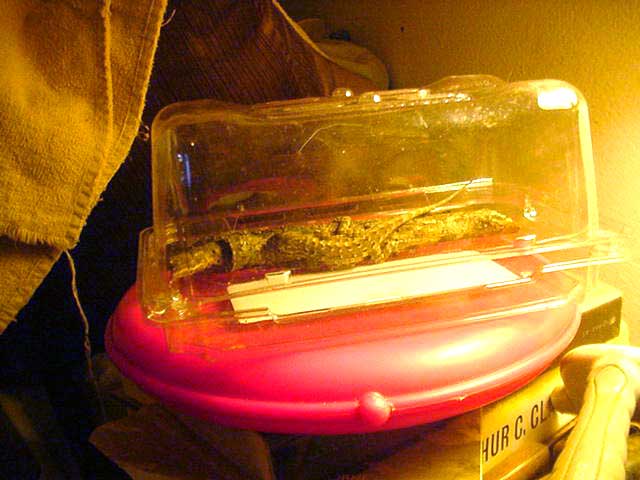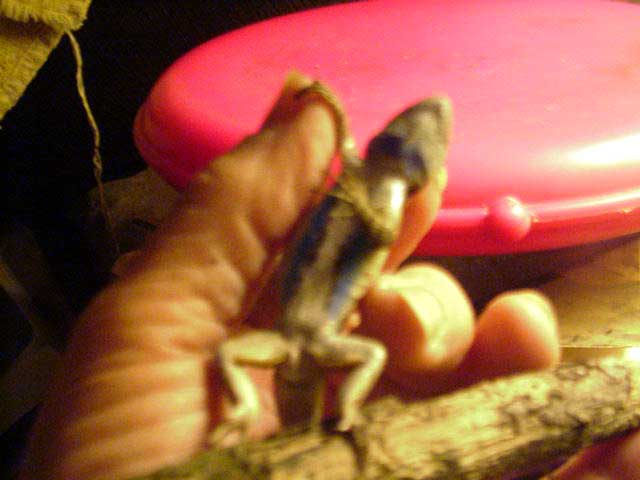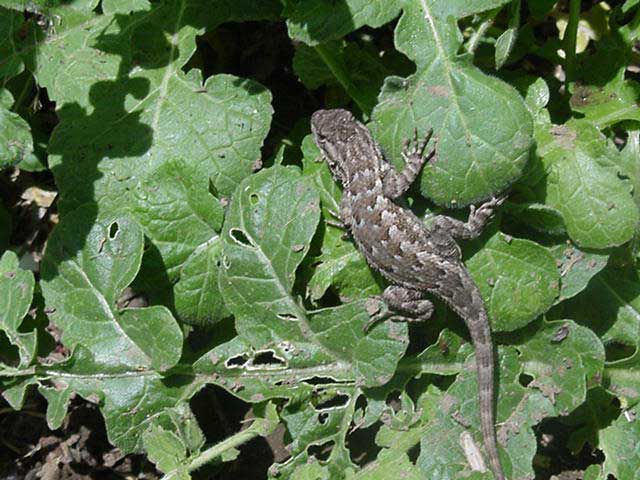
Blue-belly Lizard Rescue(how I rescued a Western Fence Lizard)by Pam Green, © 2015 |
How I rescued and revived a Blue-Belly Lizard , also called Western Fence Lizard, found floating in a rain barrel , chilled and near death, after a rainstorm.
| SITE INDEX | BOUVIER | RESCUE | DOG CARE |
| PUPPY REARING | TRAINING | PROBLEMS | WORKING DOGS |
| BOOKS | VERSE | IMAGES | MISCELLANEOUS |
4/8/15 : We actually got some RAIN yesterday ! For those of you in California who have forgotten , "rain" means "water falling from sky to ground". for those of you who have forgotten what "water" is, it's a more or less clear liquid that you can drink and a huge percentage of your body is made of it. Water can be made by combining hydrogen with oxygen, but don't do this at home !
Anyway when I went into my yard this morning and went to scoop some rain water out of the plastic bushel tub that I had set out as rain-catcher, I saw a little lizard floating in it. The poor little thing looked dead, but when I scooped it out one foot moved. so it was alive but very chilled. (If I'd found it much later, it would have been "really most sincerely dead").
So I brought it inside and set it into one of those plastic boxes that a pound of grocery store strawberries had come in. These make a good temporary mini-terrarium as they already have air holes. I took one of my SnuggleSafe discs (look like a frisbee on steriods, fluroescent pink or orange) and nuked it (when microwaved they can give off heat for over 8 hours --- used by vets a lot, and also nice if you have cold feet at night or for abdominal cramps) . I placed the mini-terrarium on top of the heated disc and put a climbing stick inside too so lizard could remove self from heat when it warmed up. This gives a gentle heat to bottom of the plastic box, probably less than my skin would give, like nice sunlight on warm day. (I did not take a thermometer to measure heat, but it seemed well within lizard comfort range)

About 2 hours later the lizard was showing some movement and responsiveness again, able to grasp the stick, able to move around a bit. Now his body no longer felt cold to me, but closer to normal lizard temp.
Meanwhile I'd looked through my National Audubon Society Field Guide to North Americn Reptiles and Amphibians. It's not a really huge reference. The best match and really the only likely match was Western Fence Lizard, also known as Blue Belly Lizard. The book said it (or the males) had blue markings on side of belly and underside of neck (no photo of underside shown) and this little guy does have these markings. (I later found a photo showing markings in another reptile reference book.)

By now it's noonish and warm outside, with sun in some parts of my yard. So I found a patch of broad-leafed weeds in the sun and with a lot of little beetles and tiny infant beetles. I put the lizard on a sunny leaf near supply of tiny beetles, then I sat back to watch. As he warmed up further in sun he became more and more responsive to surroundings and more active. I was hoping to see him eat, but did not see that. I caught a few more photos.. eventually he scooted into the "jungle" of these weeds . This patch gives easy choice between full sun basking and cool shade and nearby even cooler shade. So that's where he eventually went out of sight.

This kind of lizard , whatever he was, is common around here, though I am not seeing many this year.
I feel really good about rescuing this little life. I hope he goes on to live out a normal life, whatever that might be for his kind.
"Living free and in the wild !" (as a PBS kids show on the wonder of wild animals says).
to learn more about Blue-Belly Lizards
| site author Pam Green | copyright 2003 |
| created 8/4/2015 | revised 9/01/2015 |
| return to top of page | return to Site Index |